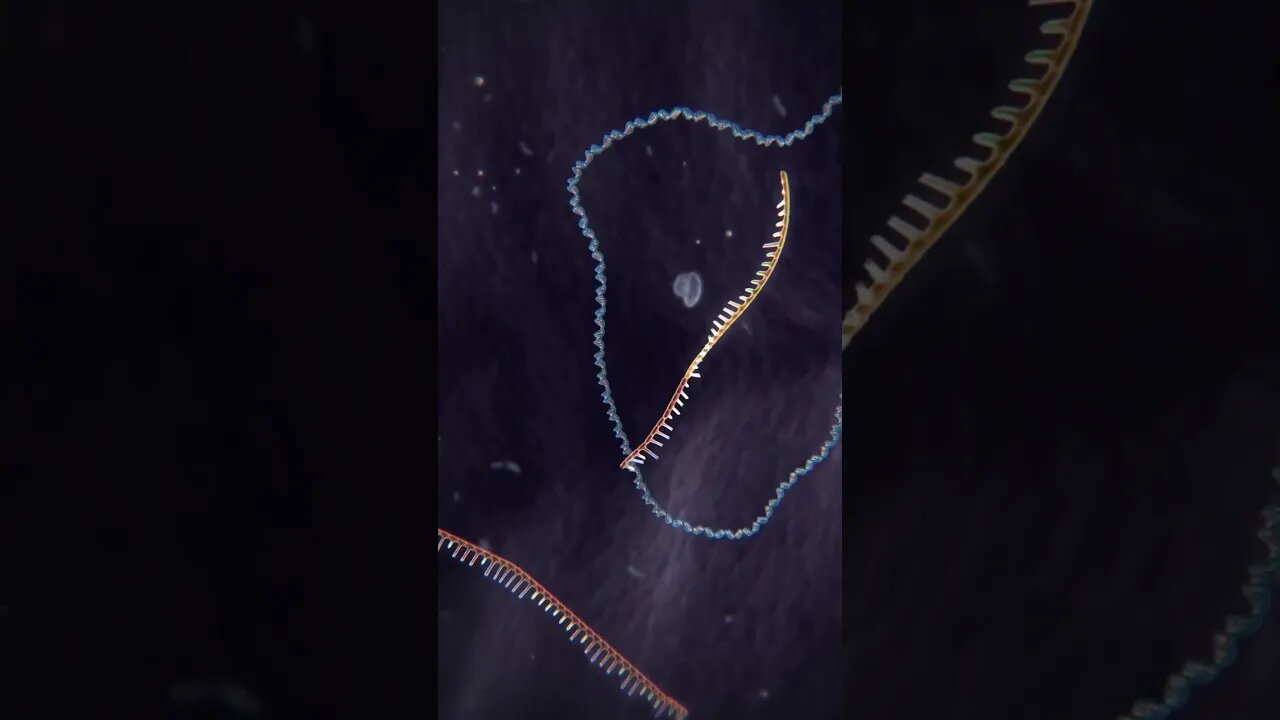Premium Only Content

Sterilizing skeeters using CRISPR/Cas9 - Quick Science News
Source : https://phys.org/news/2021-05-sterilizing-skeeters-crisprcas9.html
Some quick Science based news. I am not a journalist just a guy sharing science and tech news I find interesting.
Cant remember if i stated this in the video but its only for 100 deeds.
#Shorts #Crispr #News
Want to support Channel?
-----------------------------
Leaving a Tip : https://www.paypal.me/agrosquerril
Buying me a coffee : https://ko-fi.com/agrosquerrilnarrates
Becoming a Patreon : https://www.patreon.com/agrosquerrils
MERCH Store : https://teespring.com/stores/asn-3
-----Socials-----
Email : Agrosquerrils@gmail.com
Twitter : https://twitter.com/agrosquerrils
Streamlabs : https://streamlabs.com/agrosquerrils
Discord : https://discord.gg/XeMwEqX
Instagram : Agro_Squerril_Narrates
Lbry : @AgroSquerrilNarrates
--------------
What is Crispr?
------------------------
CRISPR (/ˈkrɪspər/) (which is an acronym for clustered regularly interspaced short palindromic repeats) is a family of DNA sequences found in the genomes of prokaryotic organisms such as bacteria and archaea.[2] These sequences are derived from DNA fragments of bacteriophages that had previously infected the prokaryote. They are used to detect and destroy DNA from similar bacteriophages during subsequent infections. Hence these sequences play a key role in the antiviral (i.e. anti-phage) defense system of prokaryotes and provide a form of acquired immunity.[2][3][4][5] CRISPR are found in approximately 50% of sequenced bacterial genomes and nearly 90% of sequenced archaea.[6]
Diagram of the CRISPR prokaryotic antiviral defense mechanism[7]
Cas9 (or "CRISPR-associated protein 9") is an enzyme that uses CRISPR sequences as a guide to recognize and cleave specific strands of DNA that are complementary to the CRISPR sequence. Cas9 enzymes together with CRISPR sequences form the basis of a technology known as CRISPR-Cas9 that can be used to edit genes within organisms.[8][9] This editing process has a wide variety of applications including basic biological research, development of biotechnological products, and treatment of diseases.[10][11] The development of the CRISPR-Cas9 genome editing technique was recognized by the Nobel Prize in Chemistry in 2020 which was awarded to Emmanuelle Charpentier and Jennifer Doudna.[12][13]
-----------------------
From Wikipedia
What is Cas9?
--------------
Researchers studied a simpler CRISPR system from Streptococcus pyogenes that relies on the protein Cas9. The Cas9 endonuclease is a four-component system that includes two small molecules: crRNA and trans-activating CRISPR RNA (tracrRNA).[40][41] Jennifer Doudna and Emmanuelle Charpentier re-engineered the Cas9 endonuclease into a more manageable two-component system by fusing the two RNA molecules into a "single-guide RNA" that, when combined with Cas9, could find and cut the DNA target specified by the guide RNA. This contribution was so significant that it was recognized by the Nobel Prize in Chemistry in 2020. By manipulating the nucleotide sequence of the guide RNA, the artificial Cas9 system could be programmed to target any DNA sequence for cleavage.[42] Another group of collaborators comprising Virginijus Šikšnys together with Gasiūnas, Barrangou and Horvath showed that Cas9 from the S. thermophilus CRISPR system can also be reprogrammed to target a site of their choosing by changing the sequence of its crRNA. These advances fueled efforts to edit genomes with the modified CRISPR-Cas9 system.[18]
CRISPR has been modified to make programmable transcription factors that allow scientists to target and activate or silence specific genes.[62]
The CRISPR-Cas9 system has shown to make effective gene edits in Human tripronuclear zygotes first described in a 2015 paper by Chinese scientists P. Liang and Y. Xu. The system made a successful cleavage of mutant Beta-Hemoglobin (HBB) in 28 out of 54 embryos. 4 out of the 28 embryos were successfully recombined using a donor template given by the scientists. The scientists showed that during DNA recombination of the cleaved strand, the homologous endogenous sequence HBD competes with the exogenous donor template. DNA repair in human embryos is much more complicated and particular than in derived stem cells.[63]
--------------
Wikipedia
-
 11:46
11:46
Agro Squerril Narrates
1 year ago $0.42 earnedThey do it on fracking PURPOSE & Technically | 2247 | Humans and Humanity are OP | Best of HFY
1.83K1 -
 3:58:41
3:58:41
Alex Zedra
6 hours agoLIVE! Scary game again :D
11.2K -
 3:04:10
3:04:10
TimcastIRL
7 hours agoLeftist Anti ICE Just OPENED FIRE On ICE Agents In California At LA Riots | Timcast IRL
308K138 -
 2:01:53
2:01:53
Inverted World Live
7 hours agoPentagon Monster Hunters and One Year Since Butler, PA | Ep. 73
29.6K5 -
 9:21:38
9:21:38
Dr Disrespect
15 hours ago🔴LIVE - DR DISRESPECT - UNBELIEVABLE WARZONE CHALLENGES
215K15 -
 1:40:10
1:40:10
AimControllers
8 hours ago $5.98 earned🔴LIVE - THE PRE GAME LOBBY PODCAST Ep. 2
34.8K1 -
 19:19
19:19
Actual Justice Warrior
11 hours agoAna Kasparian DESTROYS Los Angeles Democrats
46.8K18 -
 44:12
44:12
Ohio State Football and Recruiting at Buckeye Huddle
9 hours agoIs Order Finally Being Restored to College Football?
35.4K -
 9:11
9:11
Faith Frontline
9 hours agoWatch Alan Ritchson EXPOSE Hollywood’s Atheism With Jesus
38.8K20 -
 4:29:52
4:29:52
VOPUSARADIO
1 day agoPOLITI-SHOCK! "DESTROY THE NARRATIVE & EXPOSE THE FRAUDS" W/ Special Guest Timothy Shea
34.7K